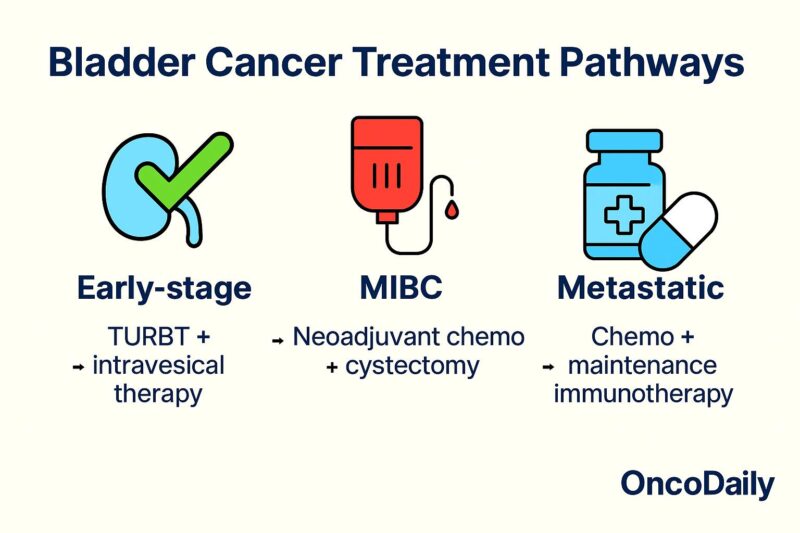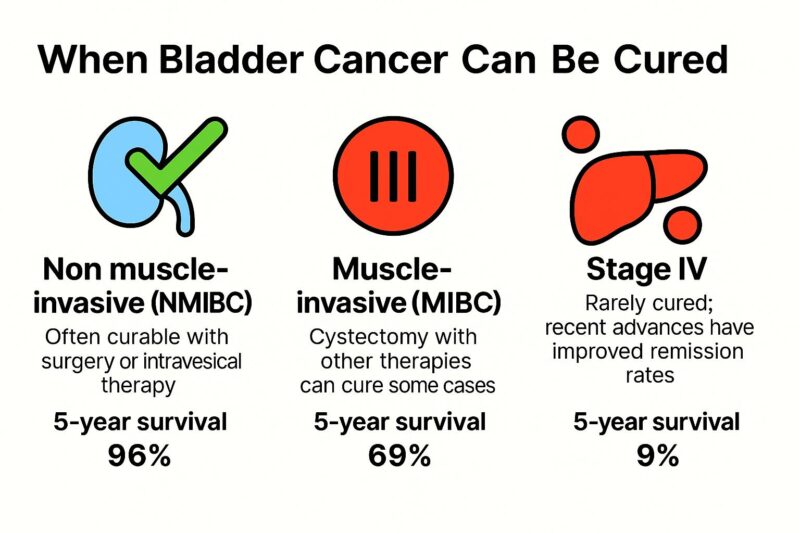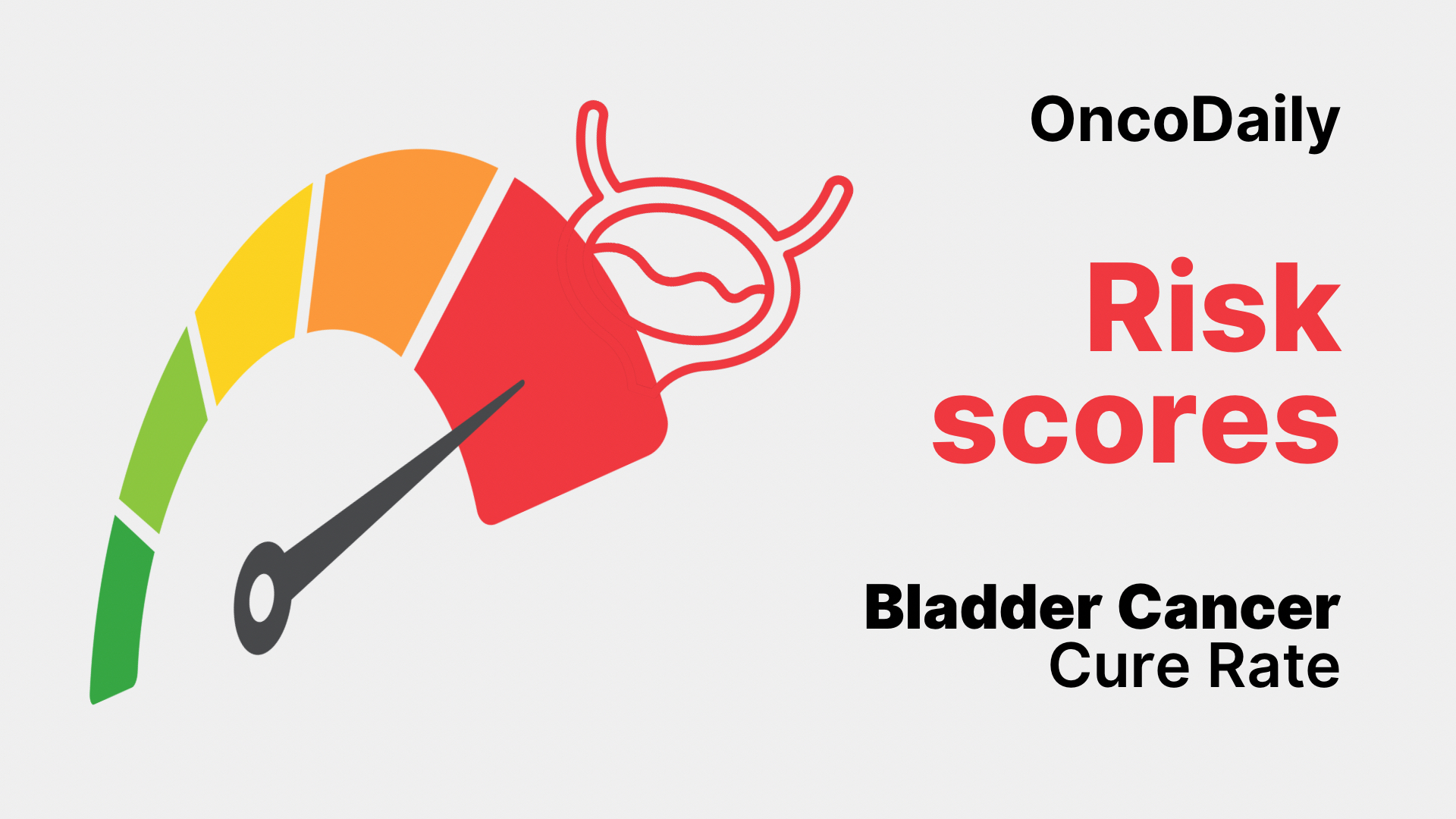Understanding the bladder cancer cure rate is crucial for patients and caregivers navigating this common yet complex disease. While hearing the word “cancer” can be overwhelming, bladder cancer—especially when detected early—has one of the highest cure rates among urologic cancers. Thanks to advances in surgical techniques, intravesical therapies, and the rise of immunotherapy, many patients today can achieve long-term remission or complete cure.
According to the American Cancer Society, over 83,000 people in the U.S. will be diagnosed with bladder cancer in 2024 (Siegel et al., 2024). But here’s the encouraging news: for many of them, a cure is possible—especially when it’s caught early.

Is Bladder Cancer Curable?
Yes—often. But the answer depends on one key factor: how far the cancer has spread at diagnosis.
When bladder cancer is found early and confined to the bladder lining—known as non-muscle-invasive bladder cancer (NMIBC)—it’s usually curable. The standard approach is to remove the tumor using a procedure called transurethral resection of bladder tumor (TURBT), followed by intravesical therapy (often with BCG, a type of immune-stimulating treatment). The results are impressive: about 96% of people diagnosed at this early stage live at least five years after diagnosis (SEER, 2023).
Things become more complex when the cancer grows into the bladder muscle layer. This stage, known as muscle-invasive bladder cancer (MIBC), is more aggressive—but still potentially curable. Most patients undergo bladder removal (radical cystectomy), often with chemotherapy before surgery to improve outcomes. Even in this more advanced form, the 5-year bladder cancer cure rate is around 69% (National Cancer Institute, 2023).
At the most advanced stage—Stage IV, where cancer has spread to distant organs like the liver or lungs—cure becomes much harder. But don’t lose hope. Thanks to immunotherapy and newer drugs, some patients are living years longer with fewer side effects, and even achieving long-lasting remissions. Current survival at five years is about 9%, but that number is slowly improving with clinical advances (American Cancer Society, 2024).

How Immunotherapy Is Changing the Game
In the past, chemotherapy was the main option for advanced bladder cancer—and while it helped, it often came with tough side effects and limited benefit. But now, immunotherapy is rewriting the rules.
Drugs like atezolizumab, nivolumab, and pembrolizumab help “take the brakes off” the immune system so it can recognize and attack bladder cancer cells. Studies like IMvigor130 and KEYNOTE-057 have shown that some patients—especially those whose tumors express PD-L1—can have strong and lasting responses to these treatments (Powles et al., 2020; Balar et al., 2021).
And it’s not just for metastatic disease. Immunotherapy is now being used even in early but high-risk NMIBC that no longer responds to BCG. For some patients, this may help them avoid losing their bladder entirely.
Another major breakthrough came from the JAVELIN Bladder 100 trial, which showed that using the drug avelumab as maintenance therapy after chemotherapy significantly improves overall survival (Bajorin et al., 2020). This is now the new standard of care for many patients with advanced bladder cancer.

Why Tumor Biology Matters
Not all bladder cancers behave the same. Tumors with certain genetic or molecular features—like high-grade histology or variant cell types—are more likely to come back, even after surgery. On the flip side, patients with low-grade tumors or strong immune responses may do extremely well.
Doctors increasingly use tools like PD-L1 testing, molecular profiling, and risk stratification systems to personalize treatment plans. This is precision medicine in action, helping doctors decide who might benefit most from surgery, who needs chemotherapy, and who could thrive with immunotherapy.
Looking Ahead
The future of bladder cancer treatment is rapidly evolving. Researchers are testing AI-powered tools to detect recurrence earlier, liquid biopsies to monitor treatment response, and next-generation immunotherapies to boost outcomes.
And perhaps most importantly, there’s a growing global effort to expand access to care, especially in lower-income countries where survival rates lag behind. Curing bladder cancer shouldn’t be a privilege—it should be possible for everyone, everywhere.
Final Takeaway
Bladder cancer isn’t what it used to be. For many patients, especially those diagnosed early, it’s a highly curable disease. And for those facing advanced cancer, hope is no longer a fantasy—it’s being realized every day, in clinics and cancer centers around the world. With the right diagnosis, the right treatment, and the right support, patients are living longer, fuller lives. The cure may not be universal yet—but we’re getting closer.
You Can Watch More on OncoDaily Youtube TV
Written by Armen Gevorgyan, MD
